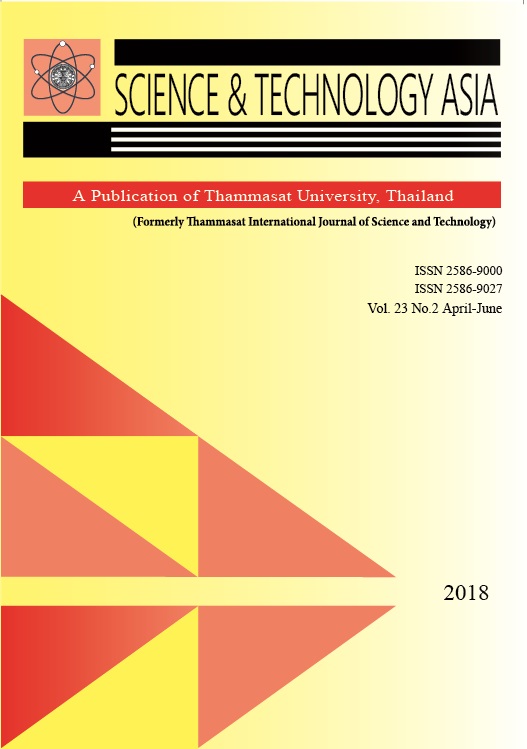Optimization and Validation Study of HPLC with Fluorescence Detection Method for Analysis of Benzo[C]Fluorine
Main Article Content
Abstract
Optimization and method validation of HPLC with fluorescence detector for the determination of benzo[c]fluorene were studied. The results showed that benzo[c]fluorene had a maximum excitation wavelength at 309 nm and a maximum emission wavelength at 354 nm. The mixture of acetonitrile-water was used as a mobile phase at a ratio of 85:15. The standard curve was linear over the concentration range of 0.5-50 ng/ml. The limit of detection and the limit of quantification were 0.27 ng/ml and 0.90 ng/ml, respectively. The relative standard deviation of precision for intra-day and inter- days were less than 5% for both low (5 ng/ml) and high (50 ng/ml) concentration of benzo[c]fluorene. The method was validated and showed satisfactory results of linearity, precision, limit of detection, and limit of quantification. Accuracy in terms of percent recovery strongly depends on sample matrix. Therefore, further studies are needed to investigate the accuracy when the method is applied in the real sample such as environmental and food samples.


